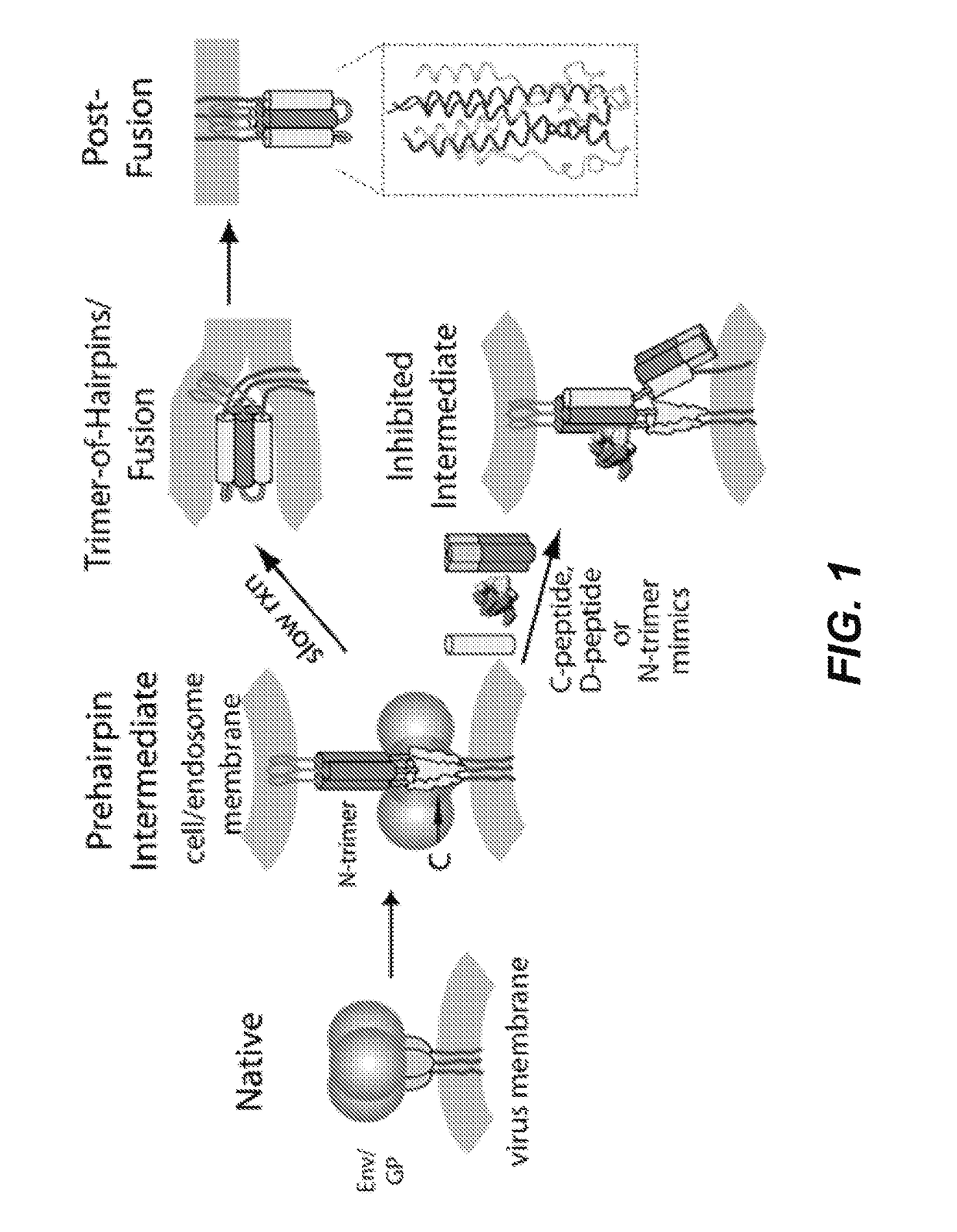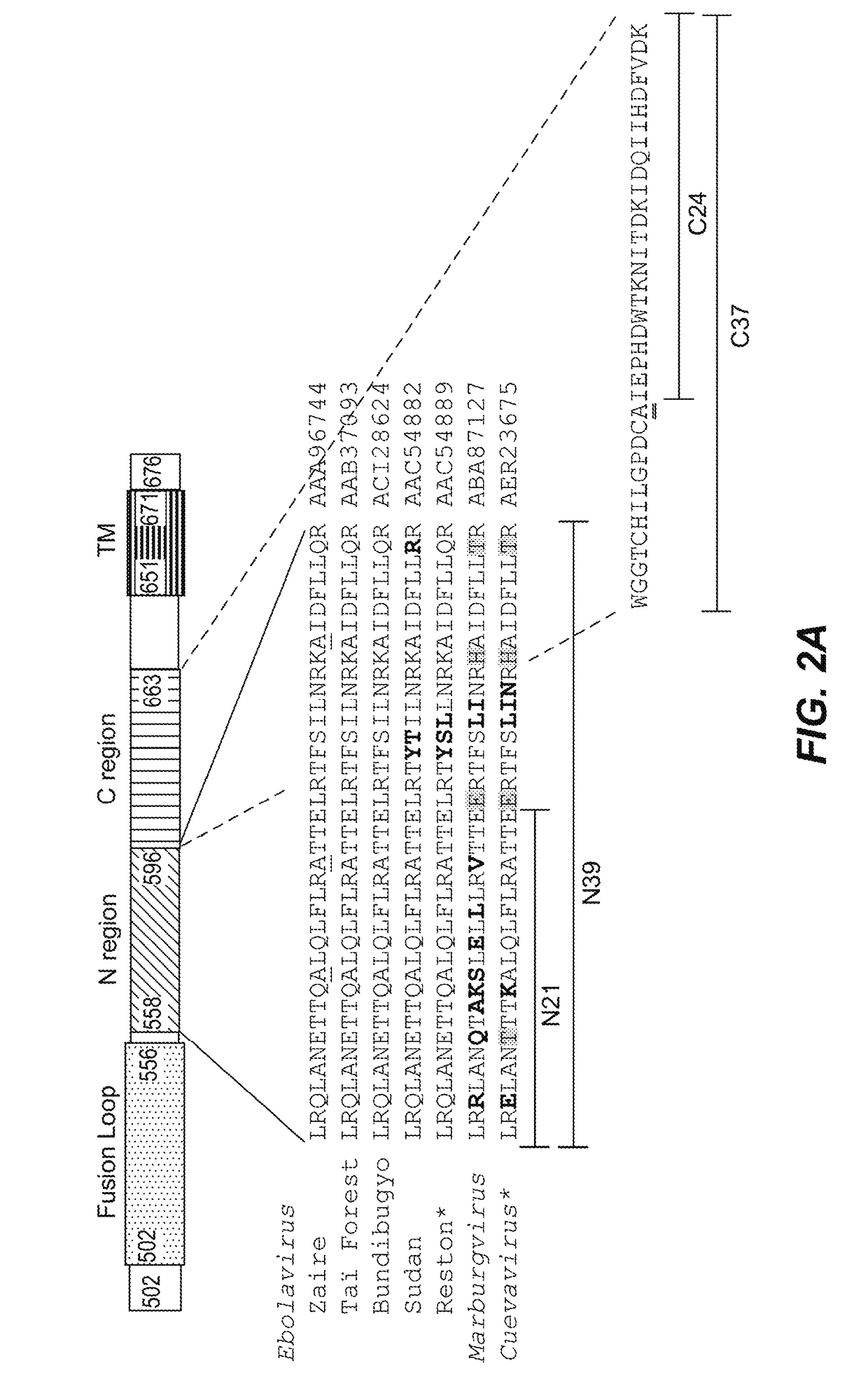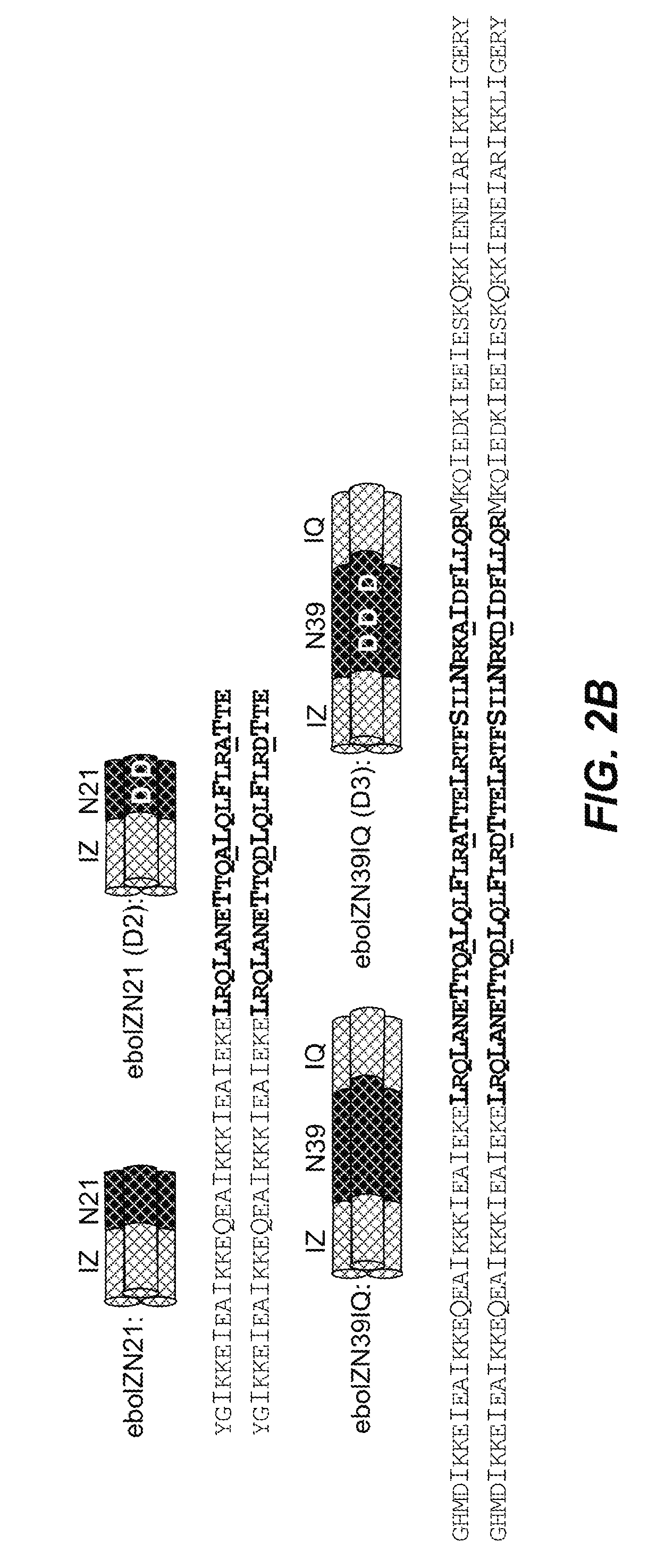Ebolavirus pre-hairpin intermediate mimics and methods of use
a technology of ebolavirus and mimics, applied in the field of ebolavirus prehairpin intermediate mimics and methods of use, can solve the problems of limited breadth, no vaccines or therapeutics are fda approved, and difficulty in combating emerging species
- Summary
- Abstract
- Description
- Claims
- Application Information
AI Technical Summary
Benefits of technology
Problems solved by technology
Method used
Image
Examples
example 1
Mimic Design
[0101]Applicants designed soluble peptide mimics of the N-trimer region of the ebolavirus GP prehairpin intermediate. In designing these peptide mimics, Applicants fused stable, soluble, designed trimeric coiled coils to the N-trimer sequence (FIG. 2B). The ebolavirus N-trimer aggregates when produced in isolation. Applicants were interested in presenting the entire N-trimer groove as well as a smaller, more conserved region of the N-trimer to provide flexibility in targeting and drug screening. The initial designs, in which the isoleucine zipper coiled coil IZm(24) was fused to the N-terminus of N-trimer segments of 29 and 39 amino acids, were highly aggregated as determined by analytical ultracentrifugation (AUC) sedimentation equilibrium experiments (data not shown). To overcome this problem, an additional trimeric coiled coil, GCN4-pIQI′ (IQ) (25) (MKQIEDKIEEIESKQKKIENEIARIKKLIGER) (SEQ ID NO: 31) was fused to the C-terminus of the Ebolavirus N-trimer segment. The re...
example 2
Binding Characterization
[0105]To validate that eboIZN39IQ presents the native conformation of the N-trimer found in the prehairpin intermediate, binding to its native ligand, the ebolavirus C-peptide, was characterized (FIG. 2), which binds along the entire groove of the N-trimer in the post-fusion trimer-of-hairpins conformation. Surface plasmon resonance
[0106](SPR) analysis (ProteOn XPR36, Bio-Rad) of the interaction of eboC37 with eboIZN39IQ showed a dissociation constant of 14 nM (FIG. 4), with no binding to the D3 negative control. This tight binding affinity is of the same magnitude as the HIV-1 N-trimer / C-peptide interaction(28) and indicate that eboIZN39IQ presents a native N-trimer. A shortened C-peptide (eboC24), missing the 13 N-terminal residues of eboC37, bound to eboIZN39IQ with a dissociation constant of ˜300 nM and did not bind to the D3 negative control (FIG. 11).
example 3
tructure of eboIZN21
[0107]The X-ray crystal structure of eboIZN21 was determined. eboIZN21 crystallized as a symmetrical trimer in spacegroup P 3 2 1, with one monomer in the asymmetric unit. The structure reveals eboIZN21 to be a continuous trimeric coiled coil, as designed (FIG. 5A). Crystals grew in the absence of ligand, allowing comparisons between our structure and the two previous structures of the Ebola 6-helix bundle (PDB IDs: 1Ebo(26) and 2Ebo(27)). Overall, there was good agreement between the N21 residues in our unliganded structure, and the previous structures with bound C-peptide as indicated by a root mean square deviation (r.m.s.d.) of 1.156 Å (1Ebo) and 1.386 Å (2Ebo) when aligned on Cα residues (FIG. 5B). However, surface renderings show that in the 6-helix bundle structures, a hydrophobic pocket is observed in the N21 region that is collapsed in the eboIZN21 structure (FIGS. 5C-5E).
[0108]The collapse of this pocket in the unliganded structure results from the side...
PUM
| Property | Measurement | Unit |
|---|---|---|
| ka | aaaaa | aaaaa |
| pH | aaaaa | aaaaa |
| temperature | aaaaa | aaaaa |
Abstract
Description
Claims
Application Information
 Login to View More
Login to View More - R&D
- Intellectual Property
- Life Sciences
- Materials
- Tech Scout
- Unparalleled Data Quality
- Higher Quality Content
- 60% Fewer Hallucinations
Browse by: Latest US Patents, China's latest patents, Technical Efficacy Thesaurus, Application Domain, Technology Topic, Popular Technical Reports.
© 2025 PatSnap. All rights reserved.Legal|Privacy policy|Modern Slavery Act Transparency Statement|Sitemap|About US| Contact US: help@patsnap.com



